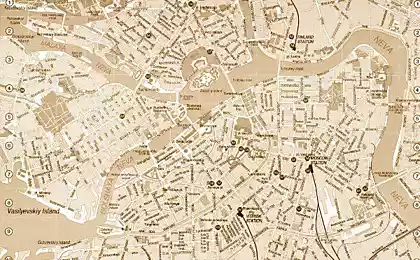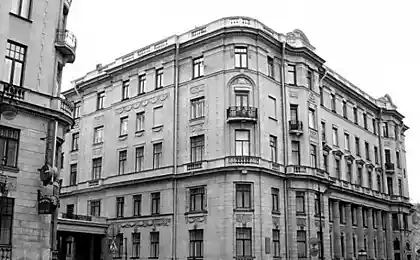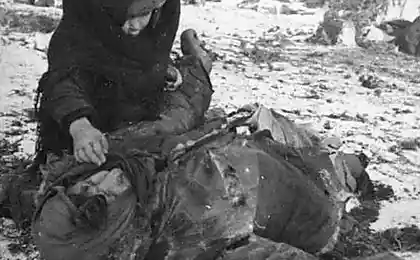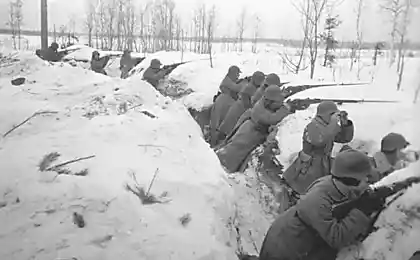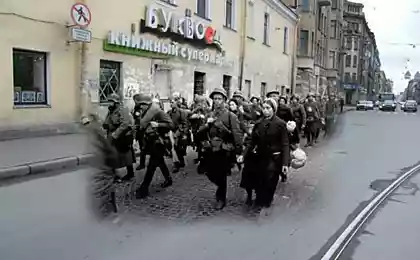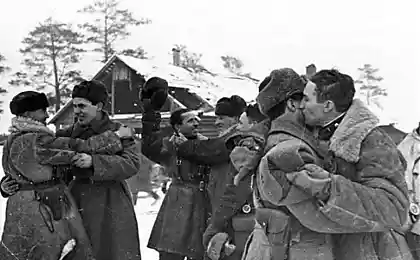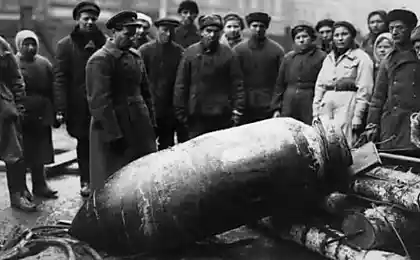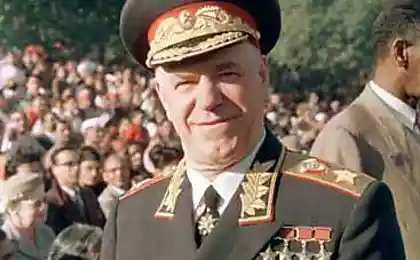1409
The Siege of Leningrad (36 photos)
Communists turned Catherine Palace, one of the most beautiful palaces in the world, to the museum. His magnificence contrasted sharply with extensive slums, which were located on the Petrograd side in the Vyborg district and were inhabited by workers.
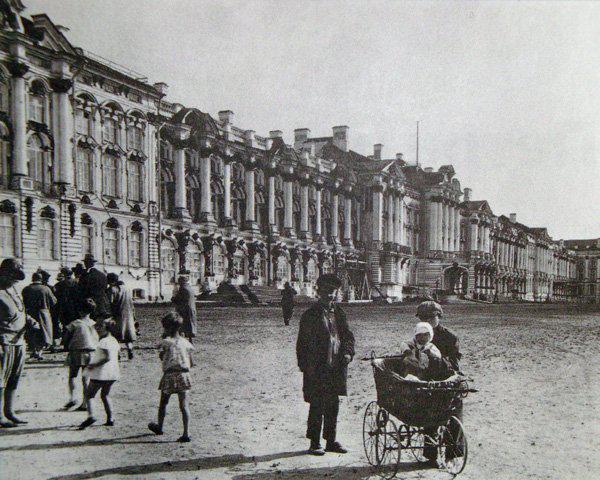
abandoned barges, frozen in the ice of pre-war Leningrad. This picture helps to imagine the extreme cold prevail in winter. In the first winter of the siege of Leningrad, many died from the cold, especially after in December 1941 due to lack of fuel heating was turned off.
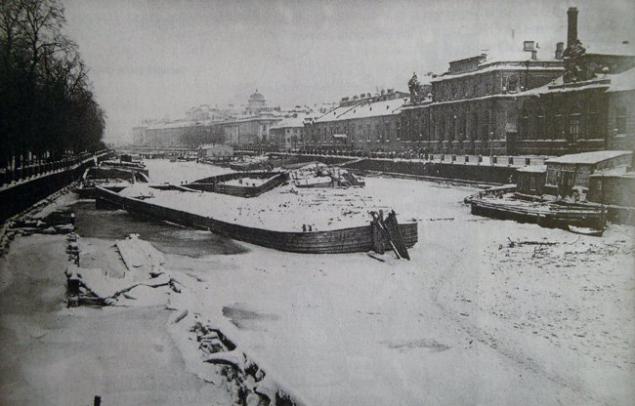
One of the characteristics of Soviet cities was a public broadcasting system that compensate for the lack of personal radios. This group of people, among whom there was also a sailor of the Baltic Fleet, listens Molotov speech in which he said that Germany invaded the Soviet Union.
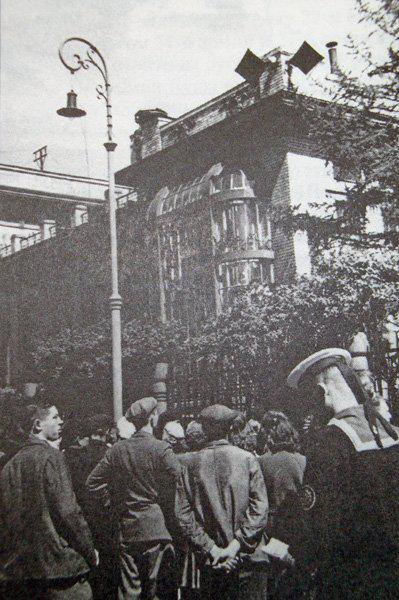
This photograph was taken in September 1941, when the bombing and shelling of Leningrad were still a novelty, and funnel draws crowds of onlookers. Pump draws water from the funnel, so that you can fix the water pipes.

Leningradites sealed the entrance to the store on Avenue Staronevsky. In this photo clearly visible architectural features of the city - wide, straight avenues with high durable buildings. A group of workers, imprinted on the image, among which we see women working under the direction of military engineering service.
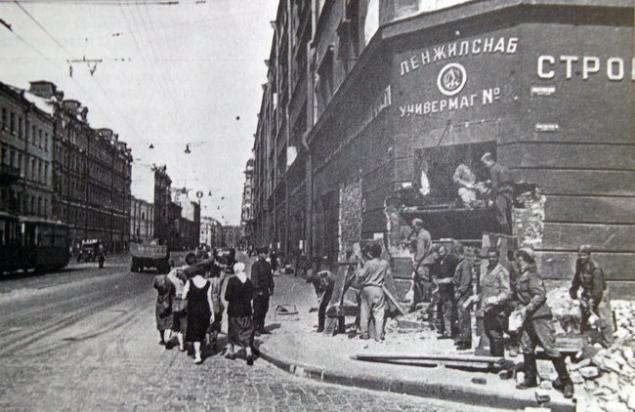
Leningrad was a major center of heavy industry. In this picture we see the lathes, which are loaded onto trucks for evacuation. These machines were on Stankilovskom plant, which the Germans from 1941 to 1943 were shelling intensified because it produces weapons.
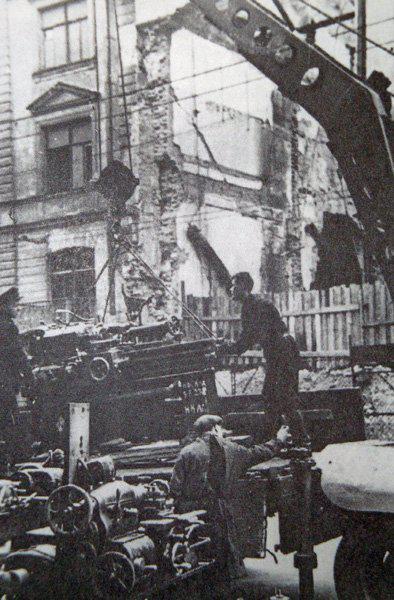
This district party leader, Comrade consoles, refers to a group of citizens gathered in the red corner executive committee. People look healthy and pretty well fed. And it seems that for the occasion were violated strict rules blackout.
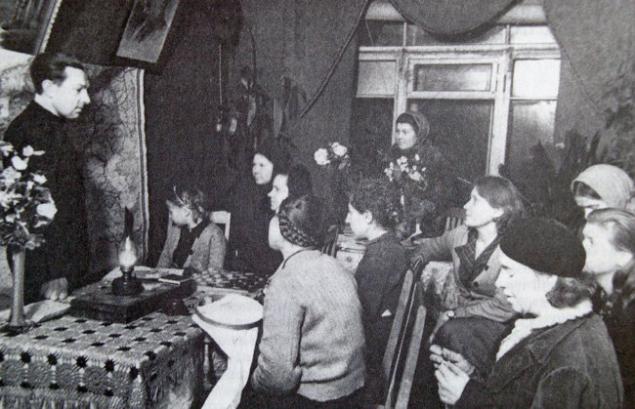
Shelling and bombing continued to carry death and destruction and increases the horror of the situation, which have come to Leningrad. Apartments, located above boarded a grocery store, which is depicted in the picture, were destroyed direct hit. Wagons standing outside the house on 199 Avenue on October 25, took most of the wreckage and debris.
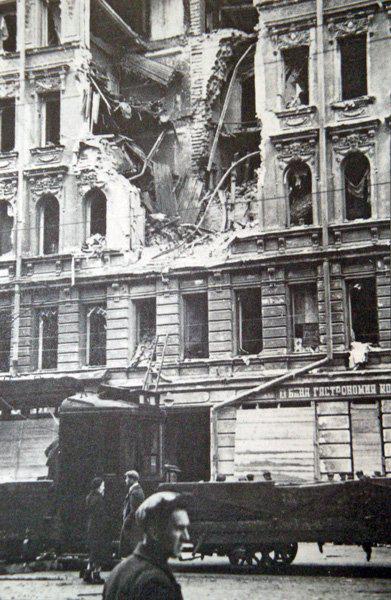
Stunned, but live from Leningrad Korbova that we see in the photo, standing next to his apartment, hit damaged a German shell. Surprisingly, furniture, despite the destruction of the walls and the floor remained intact and even remained in their places.
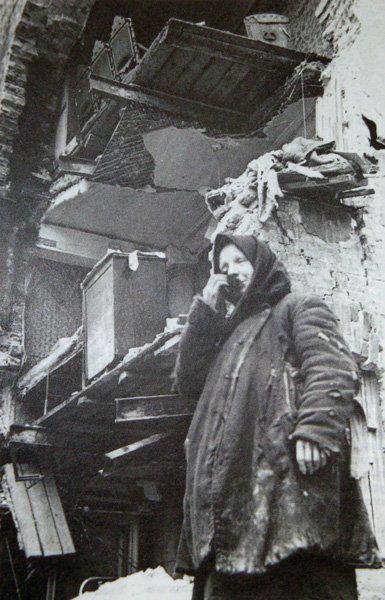
Terrible realities in the besieged city. Cleaning corpses from the streets of Leningrad soon became so commonplace that does not cause any interest from passers. These dead body was removed to the Uprising Square near the Moskovsky railway station.
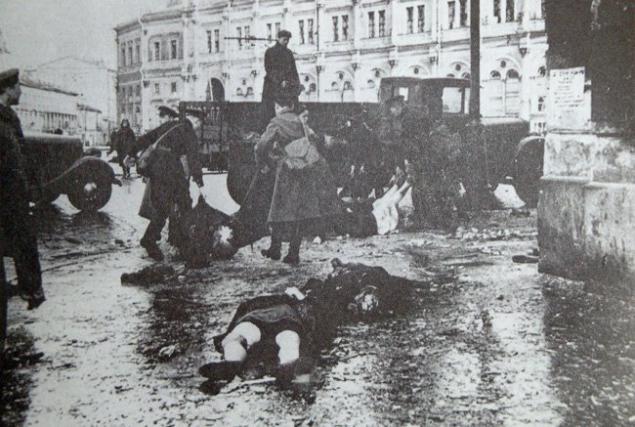
This is one of the most famous photos of the siege of Leningrad - the soldier looks at the corpses of people killed by German shells. After Hitler refused direct assault on the city, mostly German weapon that was used against its defenders, steel bombs and artillery shells - and hunger.
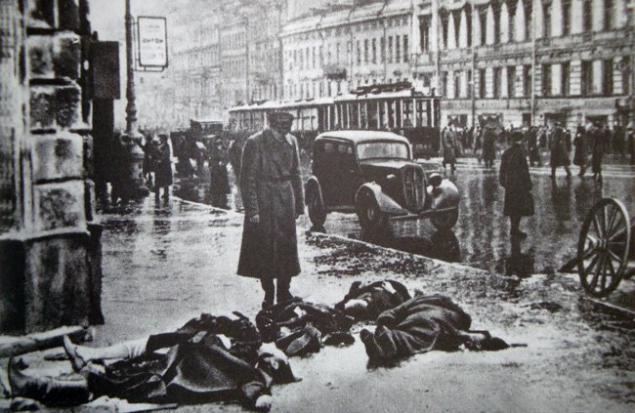
August 20, 1942 Amelkina family suffered trouble - their house was badly damaged by enemy fire. Thick walls must have taken the full force of the explosion, as the furniture and family samovar remained virtually intact.
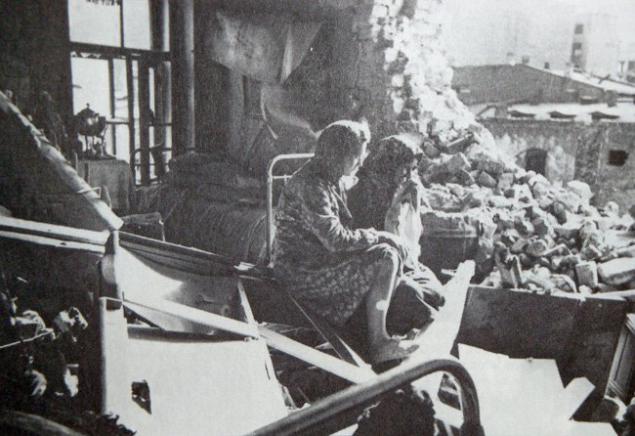
Pretty rough montage, which shows Nevsky Prospekt during the shelling. We see how people run to the left on the sidewalk, fleeing from the burst of a shell on the pavement. In the foreground lie the corpses, and, although clearly see that they are too big for the picture, it is real corpses.

The caption of the three victims of a German air raid calls us their names: "SA Gorshkov, a nine-year student of the school №122 Leninsky district, Zoya Kulikova, work, and Alexander Ilyin, construction workers. " All of them died in the hospital.
Narva residential area not far from the Gulf of Finland was just the way of the approaching Germans. For the construction of the barricade was used cobblestone pavement. The poster shows a worker raised in a threatening gesture hand and declares: "Blood for blood, death for death."

The two women patrolling the streets. Especially valuable employees like these, sometimes receive an additional allowance to their ration cards. This allowance had troops serving way of life. On the duties of patrol armbands say these women.
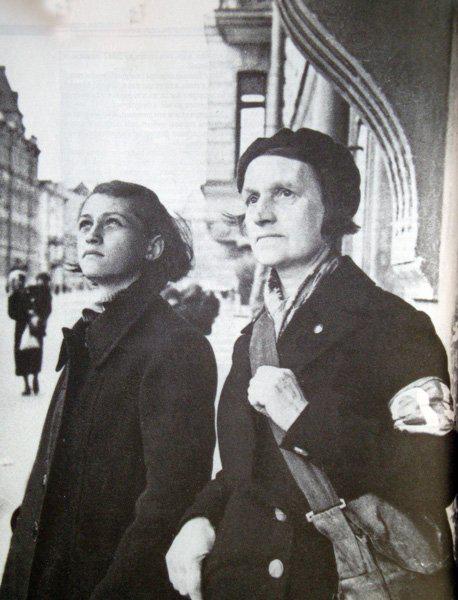
In a desperate effort to survive the siege, many people involved in the theft, especially after major air raids and shelling. In order to make the situation got out of control, young Communists, like those depicted in the picture, was issued weapons and given the right to arrest people suspected of committing theft.
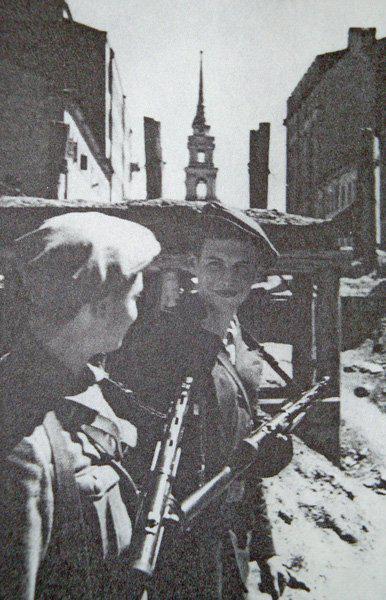
These warmly dressed, seemingly not at all hungry woman drinking tea in his canteen. This is a typical picture of those that have been made in order to show the Soviet people that, despite the blockade of Leningrad life goes on. In the background you can even consider fake cakes!
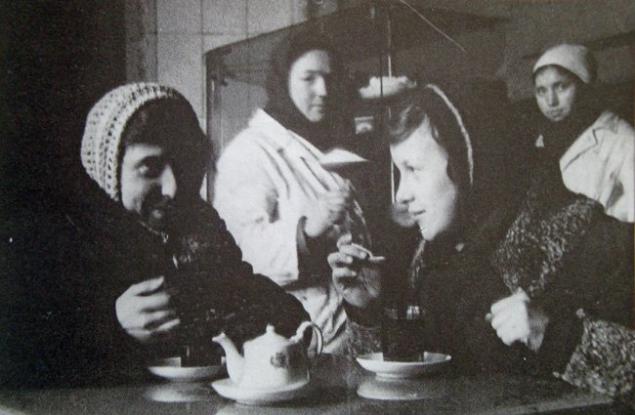
Despite the war and the city, people celebrated the New Year. In this photo young girl chooses Christmas decorations from exposed on the counter. Despite the fact that they are in the room, shopper and seller warmly dressed as heating almost did not work - fuel economy.
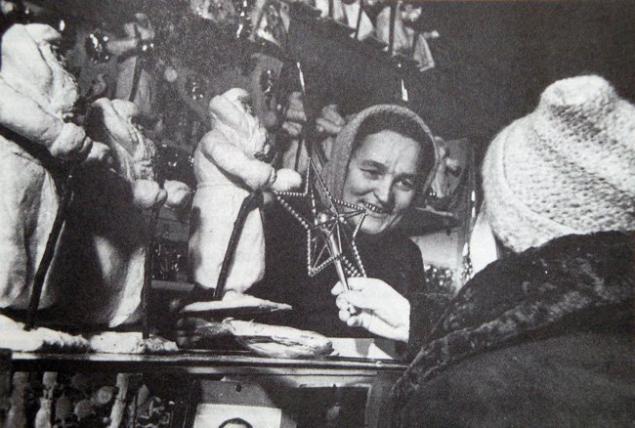
Soldiers and civilians standing in line for newspapers on the Foundry prospectus. On the faces of the civilian population has traces of hunger and deprivation that during the first winter of the siege intensified a hundredfold.
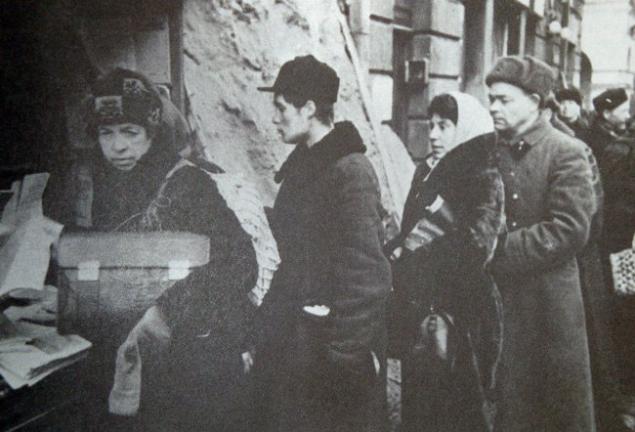
This military buys a ticket to a concert, during which performed Shostakovich's Seventh Symphony. Such cultural events for all 900 days of blockade were very popular among the defenders of Leningrad, both military and civilian, reminding them of a peaceful life.
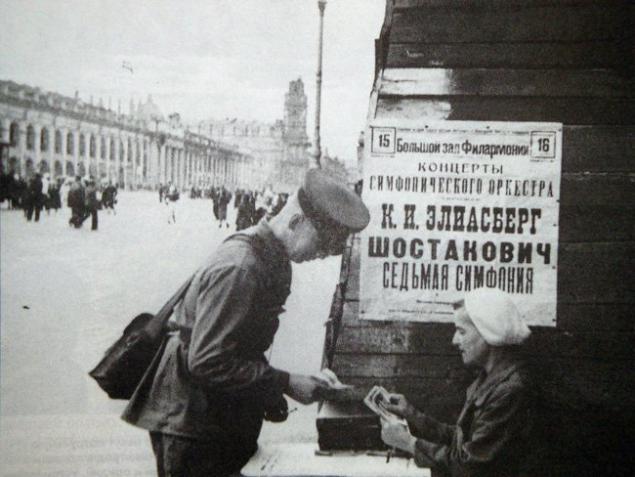
All over the city there were small workshops, such as shown in this picture. This worker repairs a submachine gun PPSh. Simple design and execution of many types of rough Soviet small arms allows to make this work even unskilled workers.
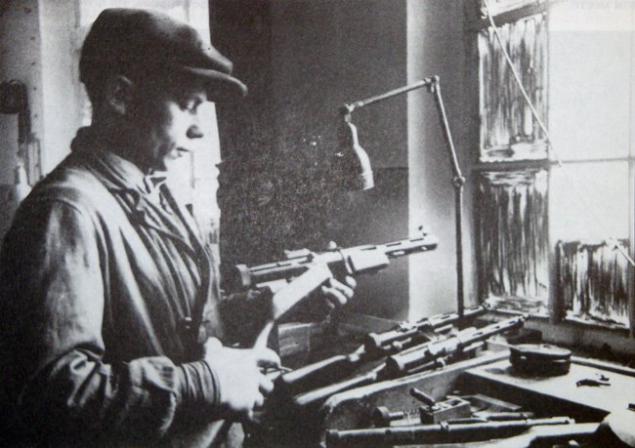
The original signature on this photo reads: "Life in the heroic Leningrad. Weapon factories continue their work during the bombing and air raids. This - Tsarev, who regularly performs plan by 300 percent. " Leningrad during the war remained a major center for the production of weapons.
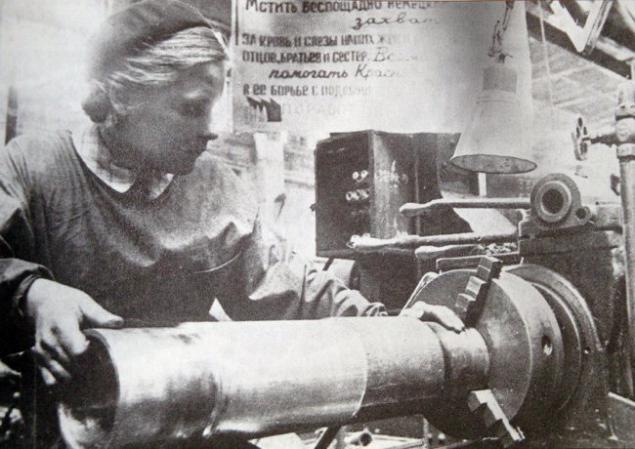
In the early years of the siege equipment and products are delivered to the city a large number of small boats and barges. On the way back they took out the workers, without which the company could do, the elderly and children to safe areas of the Soviet Union.
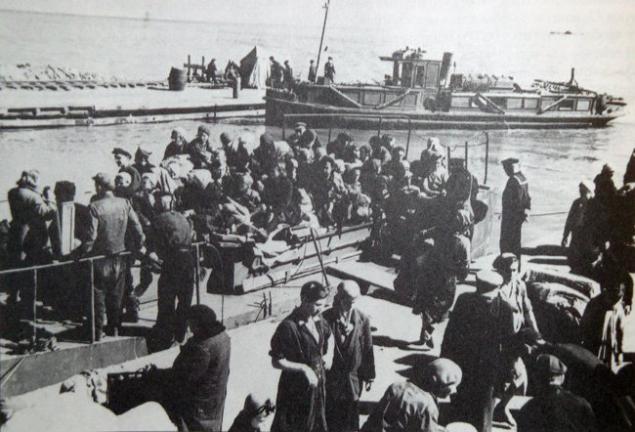
Cartage on the Road of Life. Ice road, which was held on Lake Ladoga, though she could not provide the city with everything you need and also was under constant fire from German artillery and subjected to raids from the air, in the winter of 1941/42, no doubt, saved the population of Leningrad from extinction.
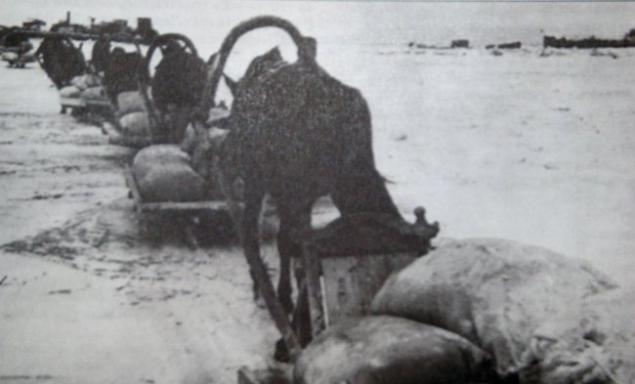
Light reflected from the ice can not be determined, whose planes are flying in the sky - Russian or German, but judging by the fact that cars can continue their journey, it is unlikely to German bombers. Number of goods transported by truck, depended on the thickness of the ice, and the speed of vehicles are often equal to the speed of the pedestrian.
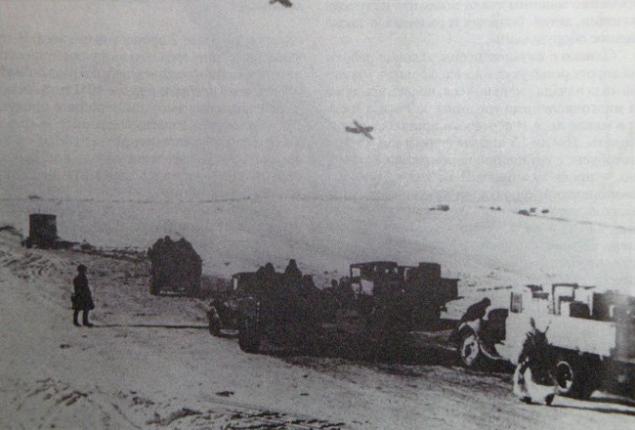
The troops experienced constant shortage of weapons, so it was necessary to collect and fix as many rifles. This group just got renovated Mosin rifle-Nagant. In the face of man, a passing soldier, it is clear that his thoughts are far from the military worries - maybe he thinks, where would get food?

This child evacuated from Leningrad during the siege. Hitler Slavs compared with rabbits and said that "they will save only his family, if the ruling class does not make them think about the others." Leningradites for three years successfully rejected the claims of his so-called "master race."
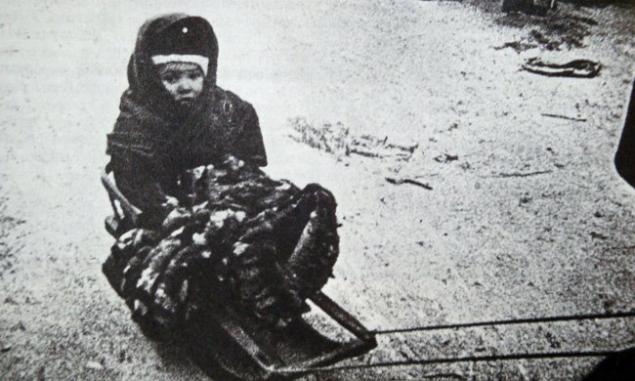
Another corpse is sent to the graveyard. On the first blockade winter, when many died from hunger, one witness wrote: "In the worst of the siege of Leningrad in the power of man-eaters. God knows what horrors going on behind the walls of the apartment. "
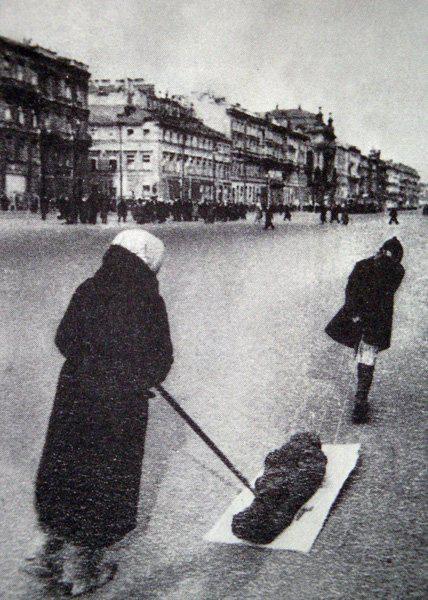
The failure of the offensive operations that the Red Army held at Leningrad in early 1942, condemned the city's population to new suffering. Air strikes, artillery bombardments, lack of electricity and fuel led to the fact that the life support system of the city stopped their work. Leningrad had to make a huge effort to survive. In this picture we see women who stand in line for water.
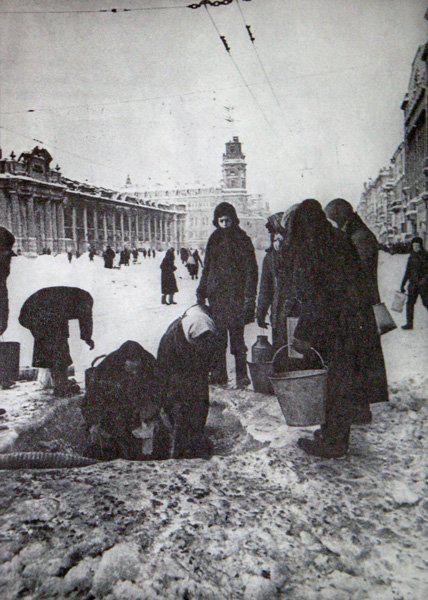
Clearing snow from the streets, without which it is impossible to imagine life in Russia, carried out in Leningrad, regardless of the state of siege. This work had to perform Leningrad all ages.
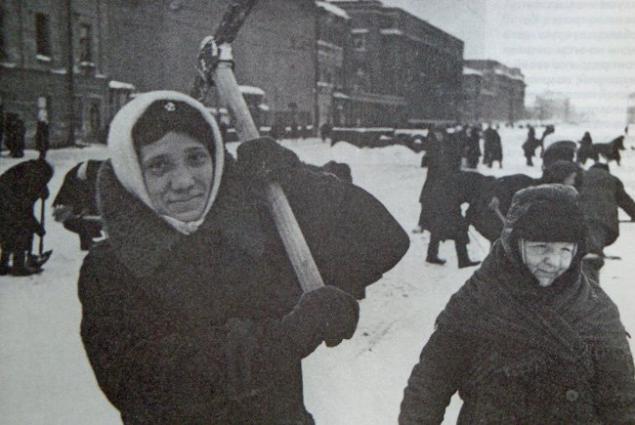
These cheerful Leningrad boys were able to maintain their enthusiasm. Persistent malnutrition leave marks on their faces, and the boy on the right, standing on skis, clearly not dressed for the weather. Boy with a cigarette, which we see in the center, of course, enjoy this forbidden pleasure.
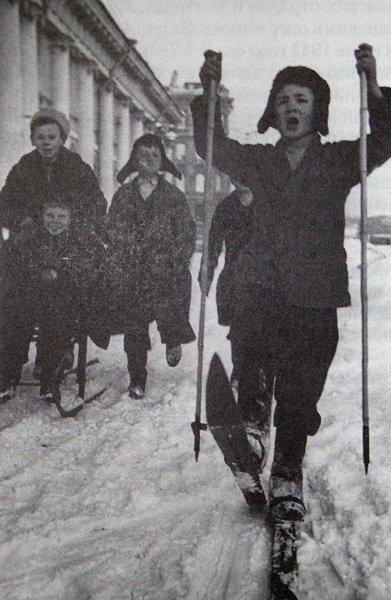
During the Siege encouraged good relations between soldiers and civilians. Visiting the wounded in the hospitals was considered very important. This girl, dressed in her best dress and very healthy looking, distributes in the hospital ward letter wounded.
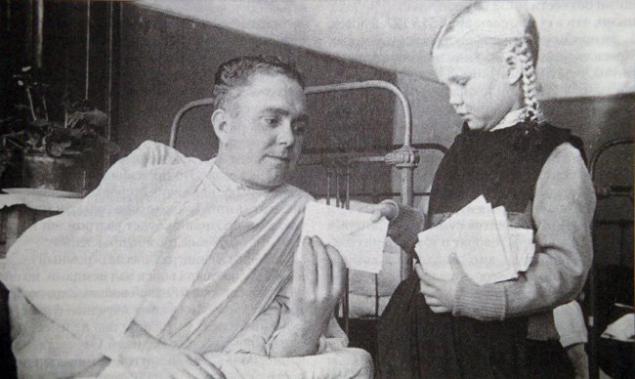
Leningradites decorate your city to celebrate the end of a three-year blockade. These women are hung at the entrance to his establishment Soviet flags.
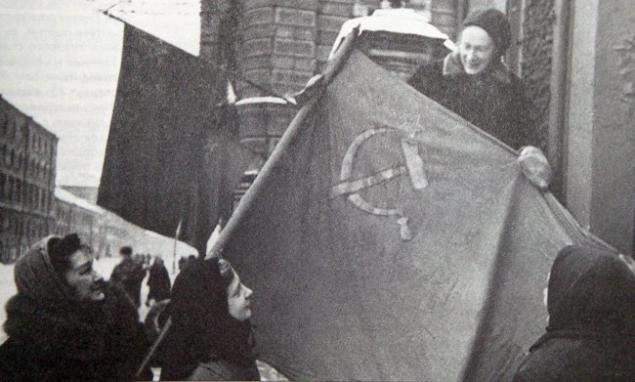
Soviet poster with a picture of Stalin. Dictator, has made great efforts to save the city during the war, in the first years after the war became jealous of his fame and glory to the heroes of the blockade. It was rumored that he had a hand in Zhdanov's death in August 1948
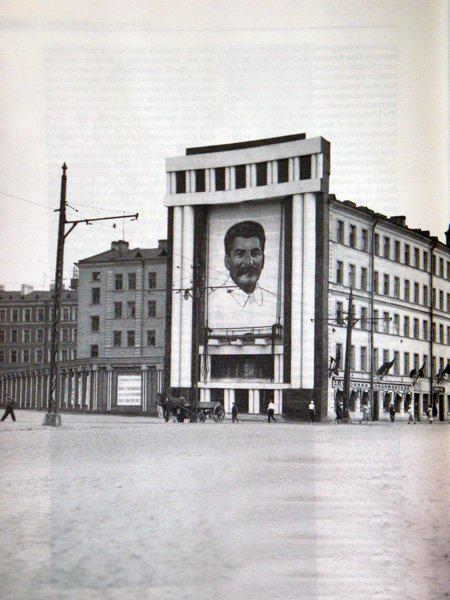
After the siege. As life is gradually returning to its former course, school groups, like the one pictured here, resumed sightseeing. But, although the buildings, streets and footpaths is no longer visible traces of destruction, on the windows and in the parks has preserved evidence of a 900-day siege.
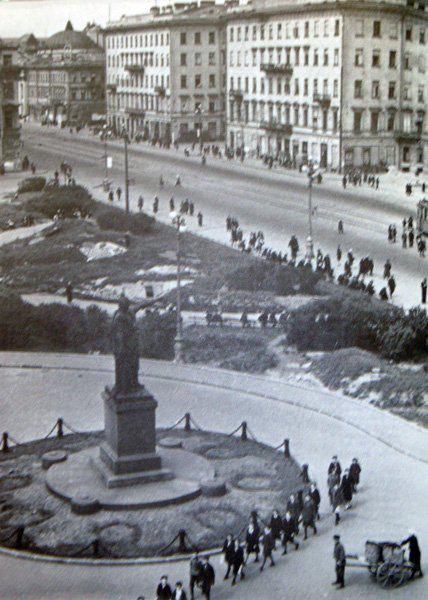

abandoned barges, frozen in the ice of pre-war Leningrad. This picture helps to imagine the extreme cold prevail in winter. In the first winter of the siege of Leningrad, many died from the cold, especially after in December 1941 due to lack of fuel heating was turned off.

One of the characteristics of Soviet cities was a public broadcasting system that compensate for the lack of personal radios. This group of people, among whom there was also a sailor of the Baltic Fleet, listens Molotov speech in which he said that Germany invaded the Soviet Union.

This photograph was taken in September 1941, when the bombing and shelling of Leningrad were still a novelty, and funnel draws crowds of onlookers. Pump draws water from the funnel, so that you can fix the water pipes.

Leningradites sealed the entrance to the store on Avenue Staronevsky. In this photo clearly visible architectural features of the city - wide, straight avenues with high durable buildings. A group of workers, imprinted on the image, among which we see women working under the direction of military engineering service.

Leningrad was a major center of heavy industry. In this picture we see the lathes, which are loaded onto trucks for evacuation. These machines were on Stankilovskom plant, which the Germans from 1941 to 1943 were shelling intensified because it produces weapons.

This district party leader, Comrade consoles, refers to a group of citizens gathered in the red corner executive committee. People look healthy and pretty well fed. And it seems that for the occasion were violated strict rules blackout.

Shelling and bombing continued to carry death and destruction and increases the horror of the situation, which have come to Leningrad. Apartments, located above boarded a grocery store, which is depicted in the picture, were destroyed direct hit. Wagons standing outside the house on 199 Avenue on October 25, took most of the wreckage and debris.

Stunned, but live from Leningrad Korbova that we see in the photo, standing next to his apartment, hit damaged a German shell. Surprisingly, furniture, despite the destruction of the walls and the floor remained intact and even remained in their places.

Terrible realities in the besieged city. Cleaning corpses from the streets of Leningrad soon became so commonplace that does not cause any interest from passers. These dead body was removed to the Uprising Square near the Moskovsky railway station.

This is one of the most famous photos of the siege of Leningrad - the soldier looks at the corpses of people killed by German shells. After Hitler refused direct assault on the city, mostly German weapon that was used against its defenders, steel bombs and artillery shells - and hunger.

August 20, 1942 Amelkina family suffered trouble - their house was badly damaged by enemy fire. Thick walls must have taken the full force of the explosion, as the furniture and family samovar remained virtually intact.

Pretty rough montage, which shows Nevsky Prospekt during the shelling. We see how people run to the left on the sidewalk, fleeing from the burst of a shell on the pavement. In the foreground lie the corpses, and, although clearly see that they are too big for the picture, it is real corpses.

The caption of the three victims of a German air raid calls us their names: "SA Gorshkov, a nine-year student of the school №122 Leninsky district, Zoya Kulikova, work, and Alexander Ilyin, construction workers. " All of them died in the hospital.
Narva residential area not far from the Gulf of Finland was just the way of the approaching Germans. For the construction of the barricade was used cobblestone pavement. The poster shows a worker raised in a threatening gesture hand and declares: "Blood for blood, death for death."

The two women patrolling the streets. Especially valuable employees like these, sometimes receive an additional allowance to their ration cards. This allowance had troops serving way of life. On the duties of patrol armbands say these women.

In a desperate effort to survive the siege, many people involved in the theft, especially after major air raids and shelling. In order to make the situation got out of control, young Communists, like those depicted in the picture, was issued weapons and given the right to arrest people suspected of committing theft.

These warmly dressed, seemingly not at all hungry woman drinking tea in his canteen. This is a typical picture of those that have been made in order to show the Soviet people that, despite the blockade of Leningrad life goes on. In the background you can even consider fake cakes!

Despite the war and the city, people celebrated the New Year. In this photo young girl chooses Christmas decorations from exposed on the counter. Despite the fact that they are in the room, shopper and seller warmly dressed as heating almost did not work - fuel economy.

Soldiers and civilians standing in line for newspapers on the Foundry prospectus. On the faces of the civilian population has traces of hunger and deprivation that during the first winter of the siege intensified a hundredfold.

This military buys a ticket to a concert, during which performed Shostakovich's Seventh Symphony. Such cultural events for all 900 days of blockade were very popular among the defenders of Leningrad, both military and civilian, reminding them of a peaceful life.

All over the city there were small workshops, such as shown in this picture. This worker repairs a submachine gun PPSh. Simple design and execution of many types of rough Soviet small arms allows to make this work even unskilled workers.

The original signature on this photo reads: "Life in the heroic Leningrad. Weapon factories continue their work during the bombing and air raids. This - Tsarev, who regularly performs plan by 300 percent. " Leningrad during the war remained a major center for the production of weapons.

In the early years of the siege equipment and products are delivered to the city a large number of small boats and barges. On the way back they took out the workers, without which the company could do, the elderly and children to safe areas of the Soviet Union.

Cartage on the Road of Life. Ice road, which was held on Lake Ladoga, though she could not provide the city with everything you need and also was under constant fire from German artillery and subjected to raids from the air, in the winter of 1941/42, no doubt, saved the population of Leningrad from extinction.

Light reflected from the ice can not be determined, whose planes are flying in the sky - Russian or German, but judging by the fact that cars can continue their journey, it is unlikely to German bombers. Number of goods transported by truck, depended on the thickness of the ice, and the speed of vehicles are often equal to the speed of the pedestrian.

The troops experienced constant shortage of weapons, so it was necessary to collect and fix as many rifles. This group just got renovated Mosin rifle-Nagant. In the face of man, a passing soldier, it is clear that his thoughts are far from the military worries - maybe he thinks, where would get food?

This child evacuated from Leningrad during the siege. Hitler Slavs compared with rabbits and said that "they will save only his family, if the ruling class does not make them think about the others." Leningradites for three years successfully rejected the claims of his so-called "master race."

Another corpse is sent to the graveyard. On the first blockade winter, when many died from hunger, one witness wrote: "In the worst of the siege of Leningrad in the power of man-eaters. God knows what horrors going on behind the walls of the apartment. "

The failure of the offensive operations that the Red Army held at Leningrad in early 1942, condemned the city's population to new suffering. Air strikes, artillery bombardments, lack of electricity and fuel led to the fact that the life support system of the city stopped their work. Leningrad had to make a huge effort to survive. In this picture we see women who stand in line for water.

Clearing snow from the streets, without which it is impossible to imagine life in Russia, carried out in Leningrad, regardless of the state of siege. This work had to perform Leningrad all ages.

These cheerful Leningrad boys were able to maintain their enthusiasm. Persistent malnutrition leave marks on their faces, and the boy on the right, standing on skis, clearly not dressed for the weather. Boy with a cigarette, which we see in the center, of course, enjoy this forbidden pleasure.

During the Siege encouraged good relations between soldiers and civilians. Visiting the wounded in the hospitals was considered very important. This girl, dressed in her best dress and very healthy looking, distributes in the hospital ward letter wounded.

Leningradites decorate your city to celebrate the end of a three-year blockade. These women are hung at the entrance to his establishment Soviet flags.

Soviet poster with a picture of Stalin. Dictator, has made great efforts to save the city during the war, in the first years after the war became jealous of his fame and glory to the heroes of the blockade. It was rumored that he had a hand in Zhdanov's death in August 1948

After the siege. As life is gradually returning to its former course, school groups, like the one pictured here, resumed sightseeing. But, although the buildings, streets and footpaths is no longer visible traces of destruction, on the windows and in the parks has preserved evidence of a 900-day siege.



